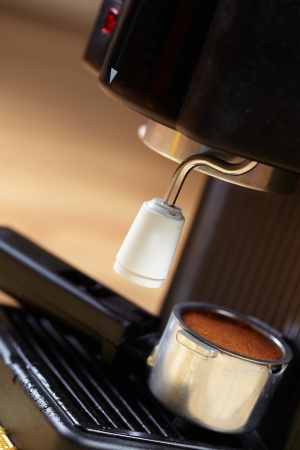1. A Tradition Steeped in Espresso
In Italy, coffee isnt just a beverage—its a way of life. Step into any Italian café, and youll see locals standing at the bar, sipping their espresso with practiced ease. This daily ritual is more than habit; its a cultural expression that has been passed down for generations. Italians take their coffee seriously, and nowhere is this more evident than in their devotion to espresso.
The Italian coffee culture revolves around simplicity, quality, and tradition. Unlike the elaborate lattes and flavored drinks found in American coffee shops, Italian espresso is all about purity—a small, concentrated shot served quickly and consumed just as fast. Its not uncommon for Italians to enjoy several espressos throughout the day, often accompanied by brief but meaningful social interactions.
The Daily Espresso Routine
To better understand how deeply espresso is woven into Italian life, here’s a look at a typical daily coffee timeline for many locals:
| Time of Day | Coffee Ritual |
|---|---|
| Morning (7:00–9:00 AM) | Espresso or cappuccino with a pastry at the local bar |
| Mid-morning (10:30–11:30 AM) | Quick espresso break with coworkers or friends |
| After lunch (1:00–2:00 PM) | Espresso to aid digestion and recharge for the afternoon |
| Afternoon (4:00–5:00 PM) | Another short espresso break during work or errands |
| Evening (7:00–9:00 PM) | Occasional espresso after dinner—never cappuccino! |
A Symbol of National Pride
For many Italians, espresso represents more than just caffeine—it embodies national identity and pride. The art of making espresso is highly respected, and baristas often undergo years of training to perfect their craft. Each region in Italy may have its own twist on preparation, but the passion remains consistent across the country.
The Italian Coffee Bar Experience
Unlike American cafés where customers may linger for hours with laptops and large drinks, Italian coffee bars are designed for efficiency and social connection. Patrons usually stand at the counter, pay first (often receiving a receipt), then present it to the barista to get their drink. The interaction is quick but warm—just enough time to exchange pleasantries before heading off to continue the day.
This deeply rooted tradition has created a strong foundation for Italy’s coffee scene. However, as global trends evolve and specialty coffee gains popularity worldwide, Italy now finds itself at a crossroads between honoring its heritage and embracing innovation.
2. Introducing Specialty Coffee: A New Wave
For decades, Italy has been known as the home of traditional espresso culture—quick, strong shots of coffee enjoyed at the bar counter. But in recent years, a new wave has started to ripple through this time-honored scene. This movement is known as “specialty coffee,” and its changing the way Italians think about their daily brew.
What Is Specialty Coffee?
Specialty coffee focuses on high-quality beans, precise brewing methods, and traceability from farm to cup. Unlike traditional Italian espresso, which often uses dark roasted blends for consistency and speed, specialty coffee celebrates origin flavors, lighter roasts, and hand-crafted techniques like pour-over or AeroPress.
Younger Generations Leading the Charge
This shift is largely driven by younger Italians who are more exposed to global trends through travel, social media, and international study. They’re curious about different coffee styles and more willing to explore cafés that offer something beyond the standard espresso.
Key Differences Between Traditional and Specialty Coffee
| Traditional Italian Coffee | Specialty Coffee |
|---|---|
| Quick espresso at the bar | Sit-down experience with slow-brew methods |
| Dark roast blends | Lighter roasts highlighting bean origin |
| Focus on speed and consistency | Focus on flavor complexity and quality |
| Limited origin information | Transparent sourcing from specific farms |
The Role of Global Influence
Cities like Milan, Rome, and Florence are seeing a rise in specialty cafés inspired by places like Brooklyn, Melbourne, and London. These shops often feature minimalist interiors, knowledgeable baristas, and menus that include flat whites, cold brews, and single-origin pour-overs. The presence of international chains and collaborations with foreign roasters have also helped push this movement forward.
A Cultural Shift in Progress
The introduction of specialty coffee isnt replacing Italys beloved espresso culture—it’s adding depth to it. While some traditionalists remain skeptical, others are embracing the idea that coffee can be both an everyday ritual and a sensory experience worth savoring. As the market continues to evolve, Italy stands at a unique crossroads between honoring its roots and exploring new flavors.

3. Old-School Resistance Meets Modern Innovation
As specialty coffee slowly gains ground in Italy, it hasn’t been welcomed by everyone with open arms. Traditional Italian coffee bars—those small, standing-room-only spots serving quick shots of espresso—have long been a cornerstone of daily life and national pride. For many Italians, the idea of changing how coffee is sourced, brewed, and even priced feels like a threat to their cultural identity.
Why Traditionalists Push Back
Many traditional baristas and cafe owners see specialty coffee as overly complicated and unnecessarily expensive. They argue that Italian coffee culture is already perfect as it is—simple, fast, and affordable. Here are some common concerns from old-school coffee lovers:
| Traditional Viewpoint | Specialty Coffee Perspective |
|---|---|
| Espresso should cost €1 and be ready in seconds | Quality beans and careful brewing justify higher prices and longer wait times |
| Milk drinks like cappuccino should only be consumed before noon | Coffee is an all-day ritual, not bound by tradition |
| Beans should come from trusted Italian roasters | Sourcing directly from farmers worldwide ensures traceability and fairness |
| No need for filters or pour-overs—espresso is king | Manual brew methods bring out unique flavors worth exploring |
The Identity Debate
For many Italians, the daily visit to the local bar is more than just about caffeine—its a social ritual tied to community and heritage. Specialty coffees emphasis on origin stories, tasting notes, and alternative brewing methods can feel alien or elitist. Some view it as an imported trend that clashes with the authentic Italian way of life.
The Emotional Connection
This resistance isn’t just about taste; its emotional. Older generations often remember growing up with the same neighborhood barista who knew exactly how they liked their espresso. Replacing that with digital scales and V60s can feel impersonal or even disrespectful.
Looking Ahead: A Slow Shift
Despite the pushback, younger Italians are increasingly open to experimenting with new styles of coffee. While tradition remains strong, innovation is slowly carving out space on the Italian coffee scene—one carefully brewed cup at a time.
4. The Role of Millennials and Coffee Entrepreneurs
As Italy’s coffee scene evolves, a new generation is leading the charge. Young Italians and expat entrepreneurs are reshaping the traditional espresso culture by introducing specialty coffee to cities like Milan, Rome, Florence, and even smaller towns. These pioneers are not just opening trendy cafés—theyre redefining how Italians experience coffee.
Millennials Driving Change
Millennials in Italy have grown up with global influences. Many have traveled or studied abroad, experiencing third-wave coffee culture in places like the U.S., Australia, and Scandinavia. When they return home, they bring back new ideas—like pour-over brewing, cold brew, and an appreciation for single-origin beans.
This younger demographic values quality over tradition. Theyre more willing to pay a bit extra for traceable beans, ethically sourced coffee, and unique flavor profiles. For them, coffee isn’t just a quick shot at the bar—it’s an experience.
Expat Entrepreneurs Making Their Mark
Foreigners living in Italy are also helping shift the scene. Many American, British, and Northern European expats have launched specialty coffee shops that blend Italian hospitality with modern brewing techniques. These cafés often serve as community hubs for both locals and internationals seeking something different from the classic espresso bar.
Key Elements of the New Coffee Scene
| Traditional Italian Coffee | Specialty Coffee Movement |
|---|---|
| Espresso-based drinks only | Pour-over, Chemex, AeroPress, cold brew |
| Dark roasted blends | Light to medium roasts, single-origin beans |
| Quick coffee at the counter | Sit-down experience with tasting notes and slow brews |
| Minimal variation in flavor | Emphasis on flavor complexity and origin transparency |
Cafés as Creative Labs
These new cafés often look more like creative studios than traditional bars. Baristas experiment with brew ratios, water temperature, and bean origins like Ethiopia or Colombia—regions rarely seen in traditional Italian blends. Customers are encouraged to ask questions, taste different styles, and learn about where their coffee comes from.
Popular Brewing Methods Among Specialty Cafés in Italy:
- V60 Pour Over
- Chemex
- AeroPress
- Siphon Brew
- Nitro Cold Brew
The rise of specialty coffee in Italy isn’t about replacing tradition—it’s about expanding it. Thanks to the passion of young Italians and international entrepreneurs, theres now space for both the old-school espresso bar and the modern brew lab to coexist.
5. Can Two Worlds Coexist?
Italy has long been known as the home of espresso, where coffee is more than just a drink—its a way of life. Traditional Italian coffee culture is rooted in quick, strong shots at the bar, no to-go cups, and simple menus. On the other hand, specialty coffee brings in a different mindset: slow brewing methods, single-origin beans, and a focus on flavor notes and sourcing ethics. So the question is—can these two worlds live side by side?
The Core Differences
To better understand the cultural tension, here’s a quick comparison between traditional Italian coffee and specialty coffee:
| Aspect | Traditional Italian Coffee | Specialty Coffee |
|---|---|---|
| Preparation Style | Espresso only | Espresso, pour-over, Chemex, AeroPress, etc. |
| Serving Size | Small (usually 25-30ml) | Varies depending on method |
| Focus | Consistency & speed | Flavor complexity & bean origin |
| Coffee Source | Blended beans for uniform taste | Single-origin & traceable beans |
| Café Atmosphere | Lively bar-style counters | Sit-down cafés with minimalist or modern vibes |
| Cup to Go? | No | Yes (very common) |
A Cultural Tug-of-War—or a Chance to Evolve?
In cities like Milan and Rome, younger generations are becoming more curious about specialty coffee. These consumers are open to trying new flavors and learning about where their beans come from. Meanwhile, many older Italians remain loyal to their trusted neighborhood café and see little reason to change what they already love.
This generational divide shows that the clash isn’t just about taste—it’s about identity. Coffee rituals are deeply tied to daily life in Italy, from morning espressos to afternoon macchiatos. Specialty coffee challenges this rhythm by encouraging people to slow down and explore coffee as an experience.
A New Kind of Café Culture?
Some modern cafés in Italy are trying to bridge the gap. They offer both traditional espresso and specialty brews under one roof. Baristas trained in both styles can serve a classic ristretto to an older customer and then prepare a V60 for someone looking for something different. This hybrid approach could be the key to blending old with new without alienating either group.
The Bottom Line
The coexistence of traditional Italian coffee culture and specialty coffee is possible—but it requires respect on both sides. While some purists might resist change, others may find that there’s room for both tradition and innovation in every cup.


